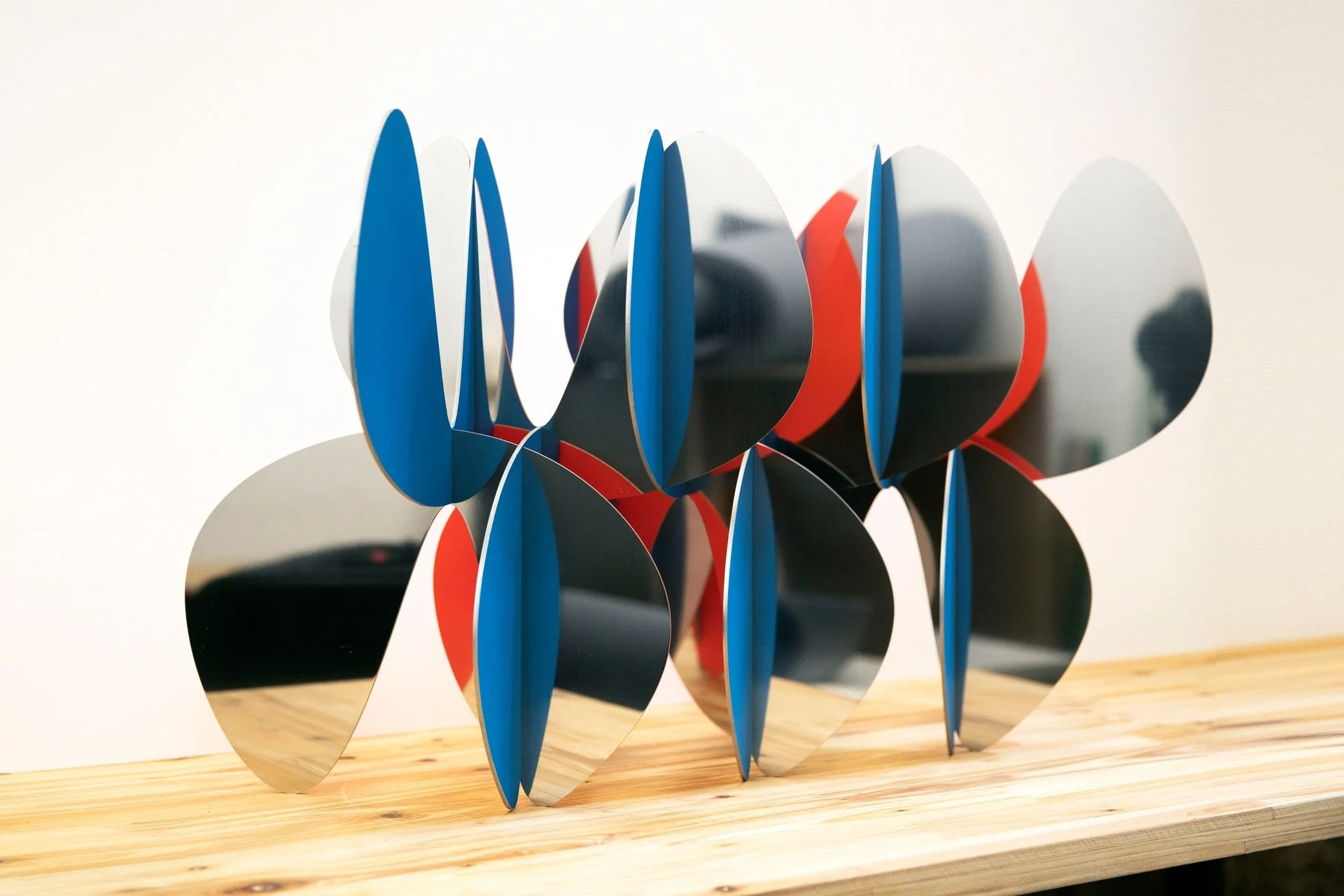Alejandro Vega Beuvrin
Sculptor Alejandro Vega Beuvrin was born in May 1979 in the Venezuelan capital, Caracas. Since 2015, he has been working on sculptures at his fine arts workshop in Barcelona: a discipline which allows him to experiment with and invest more time in the areas of architecture he previously taught at the University of Caracas. This architect-turned-sculptor uses modern technical processes to create pieces in a variety of formats designed to maintain a relationship with urban or more intimate spaces.
Alejandro Vega Beuvrin: an architect-turned-sculptor
Having graduated from the Central University of Venezuela in 2004, Alejandro Vega Beuvrin was initially a visiting professor in the Department of Design, Architecture and Fine Arts at Simón Bolívar University in Caracas, before becoming an architecture researcher in 2010. When Caracas, which he was studying in his initial profession, experienced a crackdown directed especially at students in 2014 following a change of Venezuelan government, Alejandro Vega Beuvrin decided to set up his fine arts studio in Barcelona to focus on contemporary sculpture. His architecture career and sculptural creations are influenced by urban spaces. His first metal sculptural creation was commissioned in 2015 by the city of Caracas: three huge sculptures made of metal sheets cut up and assembled; first titled Guarimba then Barricada as a direct reference to the situation on the streets. The artist recognises the direct influence of Venezuelan politics on his work, without considering it to be protest art. As he says: “The truth is I don’t know where I get my inspiration. I’m driven to create and this takes precedence over the despair and anxiety we all experience. It’s an outlet for my emotions.”
The technical challenges of “spatial drawing”
Having always been attracted to drawing as a manual discipline, Alejandro Vega Beuvrin firstly designs his sculptures on a computer. He calls his works “spatial drawing”: two-dimensional objects created in a one-dimensional digital space. Re-using the digital tools from his past as an architect, the artist designs his sculptures to have a new relationship with urban space. Similar to Sol Lewitt’s minimalism, his approach aims to re-establish the required relationship that sculpture maintains with its surroundings. Another aspect of the artist’s work which is close to minimalism is his work on form, through which he explores the aesthetic potential of his metal sculptures.
The shapes for his sculptures are made from metal sheets that are laser cut using digital drawings, then assembled. This assembly stage is key as it is where the sculpture is truly constructed to create a new sense of volume. Although Alejandro Vega Beuvrin initially used iron sheets, his choices of materials have led to technical and aesthetic experimentation, with iron, bronze, corten steel, wood and acrylic all used to create his characteristic designs. His favourite material remains stainless steel because it can be polished, which opens up a range of aesthetic possibilities to explore. He creates polished sculptures with reflections that encourage the viewer to think about the relativity of their outlook and create a vibratory effect reminiscent of sculpture’s kinetic tradition.
A successful start in the art world
Alejandro Vega Beuvrin has quickly attracted interest for his abstract sculptures. Since 2015, he has had three sculptures on permanent public display in Caracas. He has shown his metal sculptures in Paris several times, including in the gardens of the Palais Royal as part of the Carré Latin festival, in which he participated over three consecutive years from 2016 to 2018. In 2018, Alejandro Vega Beuvrin was also one of the contemporary sculptors selected as finalists for Barcelona’s Fundació Vila Casas sculpture biennale award. In 2019, he pursued his career by becoming a finalist in the award for the best artistic proposal at the A-FAD (Fostering Arts and Design): an association of artists and artisans from the design world.
His sculptures have been auctioned several times to raise funds, including for the Fe y Alegría (Faith and Joy) foundation in 2019, and for the children’s oncology department at Sant Joan de Déu Hospital in Barcelona the same year thanks to an invitation from Porsche to ART 2.0 Barcelona. The artist received an honorable mention for the sculpture Guaicaquirón at the Biennal de València Ciutat Vella Oberta 2019.












